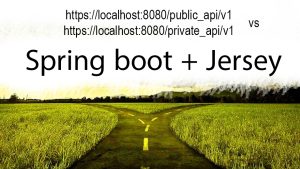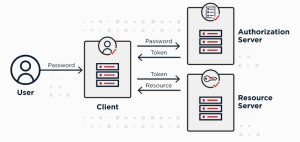Introduction
Jakarta EE (formerly Java EE) is a powerful enterprise-grade framework for building scalable and robust applications. One of its key strengths is its profile system, which provides different configurations tailored to various application needs. The three primary profiles in Jakarta EE are:
- Jakarta EE Platform – The full-featured enterprise stack.
- Jakarta EE Web Profile – A lightweight subset optimized for web applications.
- Jakarta EE Core Profile – A minimalistic profile designed for microservices and cloud-native applications.
This article explores these profiles, their differences, and their use cases.
1. Jakarta EE Platform
What Is Jakarta EE Platform?
The Jakarta EE Platform is the most comprehensive edition of Jakarta EE, encompassing the full range of APIs for enterprise applications. It includes everything needed for developing monolithic, microservices, and cloud-native applications with robust transactional support.
Key Features
- Full-stack development: Provides APIs for web applications, enterprise messaging, security, and distributed transactions.
- Enterprise-grade: Suitable for large-scale business applications that require database connectivity, security, and reliability.
- Scalability: Supports clustering and load balancing for high-performance applications.
Common Technologies Included
- Jakarta Servlet – For handling HTTP requests and responses.
- Jakarta Persistence (JPA) – For database interaction.
- Jakarta Faces (JSF) – For component-based web UI development.
- Jakarta Enterprise Beans (EJB) – For business logic and transactional support.
- Jakarta RESTful Web Services (JAX-RS) – For developing RESTful APIs.
- Jakarta Messaging (JMS) – For message-driven applications.
- Jakarta Security – For authentication and authorization.
Use Cases
- Large-scale enterprise applications (e.g., banking systems, ERP, CRM).
- Applications requiring complex business logic and transactional processing.
- Systems integrating with multiple data sources and messaging services.
2. Jakarta EE Web Profile
What Is Jakarta EE Web Profile?
The Jakarta EE Web Profile is a subset of the Jakarta EE Platform, optimized for web applications. It removes enterprise-heavy features like EJB and JMS while keeping essential web technologies.
Key Features
- Lightweight: Provides only the necessary APIs for web development.
- Faster deployment: Suitable for web applications that don’t need full enterprise features.
- Optimized for performance: Requires fewer resources than the full Jakarta EE Platform.
Common Technologies Included
- Jakarta Servlet – For handling web requests.
- Jakarta RESTful Web Services (JAX-RS) – For building REST APIs.
- Jakarta Faces (JSF) – For server-side UI development.
- Jakarta Contexts and Dependency Injection (CDI) – For dependency injection.
- Jakarta Transactions (JTA) – For managing transactions.
- Jakarta Security – For authentication and authorization.
Use Cases
- Web applications that don’t require heavy enterprise features.
- RESTful APIs for client-server communication.
- Lightweight microservices that interact with databases but don’t need JMS or EJB.
- E-commerce platforms, blogs, and content management systems.
3. Jakarta EE Core Profile
What Is Jakarta EE Core Profile?
The Jakarta EE Core Profile is the most minimalistic profile, designed for microservices and cloud-native architectures. It includes only essential APIs, making it ideal for containerized applications running in Kubernetes or serverless environments.
Key Features
- Microservices-oriented: Tailored for lightweight, distributed applications.
- Fast startup time: Ideal for environments where quick deployment is critical.
- Minimal dependencies: Reduces memory footprint for cloud-native workloads.
Common Technologies Included
- Jakarta RESTful Web Services (JAX-RS) – For building RESTful APIs.
- Jakarta JSON Processing (JSON-P) & Jakarta JSON Binding (JSON-B) – For handling JSON data.
- Jakarta Contexts and Dependency Injection (CDI) – For dependency injection.
- Jakarta Annotations – For declarative programming.
Use Cases
- Microservices deployed in containers.
- Cloud-native applications that scale dynamically.
- Serverless functions running on platforms like AWS Lambda or Google Cloud Functions.
- RESTful APIs for mobile and web applications.
Comparison Table: Jakarta EE Profiles
| Feature | Jakarta EE Platform | Jakarta EE Web Profile | Jakarta EE Core Profile |
|---|---|---|---|
| Scope | Full enterprise stack | Web applications | Lightweight microservices |
| Size | Large | Medium | Small |
| Performance | Moderate | Fast | Very fast |
| Microservices Ready? | Yes, but heavy | Yes, partially | Yes, optimized |
| JPA (Persistence API)? | ✅ Yes | ✅ Yes | ❌ No |
| JAX-RS (RESTful API)? | ✅ Yes | ✅ Yes | ✅ Yes |
| CDI (Dependency Injection)? | ✅ Yes | ✅ Yes | ✅ Yes |
| JMS (Messaging Service)? | ✅ Yes | ❌ No | ❌ No |
| EJB (Enterprise Beans)? | ✅ Yes | ❌ No | ❌ No |
Choosing the Right Profile
- Use Jakarta EE Platform if you need a full-featured enterprise application with database transactions, messaging, and security.
- Use Jakarta EE Web Profile if you are developing lightweight web applications that do not require enterprise features like JMS or EJB.
- Use Jakarta EE Core Profile if you are building microservices or cloud-native applications that require minimal dependencies and fast startup times.
Conclusion
Jakarta EE provides flexibility through its different profiles, allowing developers to choose the right stack for their project’s needs. The Jakarta EE Platform is ideal for large-scale enterprise applications, the Jakarta EE Web Profile is optimized for web applications, and the Jakarta EE Core Profile is perfect for microservices and cloud-native applications.
By selecting the right profile, developers can optimize performance, reduce complexity, and improve scalability while leveraging the power of Jakarta EE.





Comments